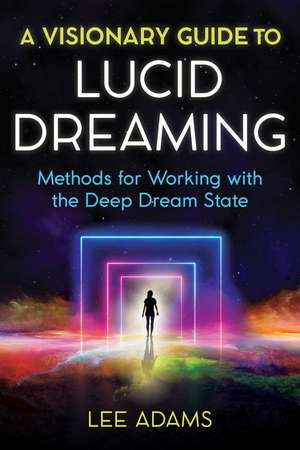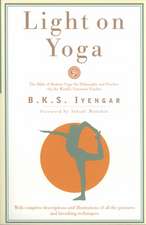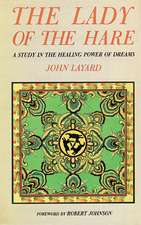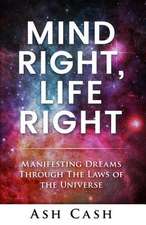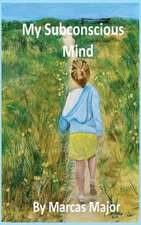A Visionary Guide to Lucid Dreaming: Methods for Working with the Deep Dream State
Autor Lee Adamsen Limba Engleză Paperback – 23 iun 2021
• Provides an extensive inventory of beginning, intermediate, and advanced tools and practices for meaningful lucid dreamwork and shows how dreams can shape our conscious reality if we incorporate them into waking life
• Offers guidance to help you overcome mental or physical obstacles, including ways to stop sleep paralysis
• Examines supplements to aid lucid dreaming practice and increase the vividness and recall of dreams
Dreams offer a gateway into our psyche. Through lucid dreaming--when you have conscious awareness during sleep--you can access and interact with the subconscious mind for greater self-awareness, personal development, and transformation.
In this step-by-step guide to dreamwork, Lee Adams provides tools and techniques for encouraging, remembering, and using lucid dreams for personal growth as well as how to have big dreams that leave a lasting impact. Beginning with an overview of the history of lucid dreaming, he shares tried-and-true foundational practices to get you started--practices for before sleep, during sleep, and after dreaming.
Drawing upon Jungian depth psychology, recent research in neuroscience, and years of personal dream practice, Adams then offers an extensive inventory of intermediate and advanced methods to support meaningful dreamwork, such as the Wake Induced Lucid Dreams technique (WILD), where you fall asleep while conscious and transport your active awareness into a dream state. He also explores dream companions, symbols of the unconscious mind, dream interpretation, and working with the shadow side of the self. He examines how dreams can shape our conscious reality if we incorporate them or their symbols into waking life. He offers guidance to help you overcome any mental or physical obstacles you may encounter, including ways to stop sleep paralysis. He also examines supplements to aid lucid dreaming practice, improve dream recall, and increase the vividness of dreams, such as Alpha-GPC, 5-HTP, Silene undulata, Mugwort, the mushroom Lion’s Mane, and Galantamine.
With this practical guide, you can ignite your mind’s capacity to wake up to your own dreams and restructure your world to be more attuned to your deeper self.
Preț: 88.83 lei
Nou
Puncte Express: 133
Preț estimativ în valută:
17.00€ • 18.48$ • 14.29£
17.00€ • 18.48$ • 14.29£
Carte disponibilă
Livrare economică 31 martie-14 aprilie
Livrare express 14-20 martie pentru 23.09 lei
Preluare comenzi: 021 569.72.76
Specificații
ISBN-13: 9781644112373
ISBN-10: 164411237X
Pagini: 192
Ilustrații: 6 b&w illustrations
Dimensiuni: 152 x 229 x 13 mm
Greutate: 0.32 kg
Editura: Inner Traditions/Bear & Company
Colecția Destiny Books
ISBN-10: 164411237X
Pagini: 192
Ilustrații: 6 b&w illustrations
Dimensiuni: 152 x 229 x 13 mm
Greutate: 0.32 kg
Editura: Inner Traditions/Bear & Company
Colecția Destiny Books
Notă biografică
Lee Adams has been actively researching, practicing, and teaching lucid dreaming for more than 20 years. He holds a bachelor’s degree in psychology and is currently pursuing a Ph.D. at Pacifi ca Graduate Institute. He runs the podcast Cosmic Echo as well as the dreamer community taileaters.com. He lives in Port Orchard, Washington.
Extras
From Chapter 16. Symbols: Keys to the Unconscious
Humans interact with the world through symbols. We use them to communicate, to define and study life, to interact with our own minds. Symbols are not only the intentional representations of concepts, such as language; they are also the meaning we imbue objects with. An owl can represent wisdom, winter represents dormancy and death, red means danger or stop, green means go. Even characters--in fiction and in dreams--function on a symbolic level as they personify qualities in the dream world and in ourselves, allowing us to describe something that is unconscious. We are able to navigate our communications and thoughts at lightning speed thanks to symbols.
You could make the argument that the dream world is all symbols. When we are dreaming, the unconscious expresses its desires to us through symbols. Though we may not immediately understand what our dream imagery means to us, noticing it and thinking about why it holds personal meaning can open us up to lessons and wisdom from the unconscious, both collective and personal. Building a personal vocabulary of dream symbols can make our dreaming practice more fluent and rewarding.
. . . When we receive information from the unconscious through symbols, we can bring those symbols from the dreamscape into the 3D world. We can also communicate to the unconscious through understanding those symbols. This deep conversation is where the magic of lucid dreaming happens.
Bringing Dream Symbols to Life
One powerful way to work with dream symbols is to introduce them into your waking environment. An item from a dream that keeps you company during the day goes from being a fleeting image to a presence in your life, giving you the physical time and space to contemplate it and for the symbol to work in your unconscious.
I’ll give you an example of how this works from my own practice. I once dreamed there was a panda in my room. Since I don’t typically encounter pandas in my room, it felt significant, as if that panda--whatever it symbolized--had some reason to be there. So I made a clay panda and set it on my bedside table. A few days later, I had a lucid dream in which a man showed up. He had a dark patch around his eye, as if he’d been in a fight, and dark and light patches of hair. I asked: “Are you a panda?” He said he was, and I proceeded to ask him some questions about dreams and reality.
To do this for yourself, simply notice in your dreams which symbols feel significant. You don’t need to be able to explain them right away--in fact, things that feel puzzling or intriguing, that inspire curiosity or that just seem odd, may be ripe for the kind of slow unfolding that can happen with this practice.
The next step is to give it a physical form. The options here are nearly endless, but here are some ideas:
• Write a word from your dream in lettering and colors that feel relevant. Make it big and put it on a wall or the fridge, or make it small and carry it in your pocket.
• Draw or paint a picture, or take a photograph. Keep it by your bedside, or hang it on a wall.
• Make a representation of your dream image with clay, paper, or other material.
• Find a toy or modela boat, a car, a spaceship, a doll--that resembles your dream symbol.
• Make use of ordinary objects that have been elevated to a place of significance by imitating their dream context. For example, if a pencil or coffee cup was floating in air in a dream, you might hang its real-world counterpart from a string or a hook.
• Collect objects you find in nature: rocks, leaves, sand. Place them in a display case or place of honor in your bedroom.
Physical items don’t necessarily have to be handmade, but there does seem to be something about the physical creative act that strengthens the symbol’s connections between conscious and unconscious. Whatever you choose, the important thing is to raise your awareness that the symbol holds a part of you that has its own consciousness, and to invite that symbol to communicate with you.
You can also introduce symbols and concepts from the waking world that you want to explore in lucid dreams. The technique for this is similar to working with physical symbols that originate in dreams, but now the symbols come from the conscious awake you. Some possibilities for generating symbols:
• If there’s an idea you want to work with, distill it into one or two words, such as creativity or life purpose. Recite it as a mantra, write it several times in a journal each day, or make it into a poster to meditate on.
• Find or create an image or object that symbolizes a significant event, idea, or feeling. Meditate on it and invite your unconscious to help you discern its meaning for you.
• Decide that the sound of a bell in your dream will cue an important insight or feeling that you need. Select a bell (or chime or bicycle ringer or another instrument) and keep it in a designated place. Before starting your lucid dreaming practice each night, ring the bell.
• Follow your intuition. This may be the most important and most effective technique. Simply notice what objects or images call to you, and then welcome them into your space, no matter how incongruous or random. When you prepare to lucid dream, ask it to come with you into your dreams, and ask your unconscious what it has to tell you about it.
Humans interact with the world through symbols. We use them to communicate, to define and study life, to interact with our own minds. Symbols are not only the intentional representations of concepts, such as language; they are also the meaning we imbue objects with. An owl can represent wisdom, winter represents dormancy and death, red means danger or stop, green means go. Even characters--in fiction and in dreams--function on a symbolic level as they personify qualities in the dream world and in ourselves, allowing us to describe something that is unconscious. We are able to navigate our communications and thoughts at lightning speed thanks to symbols.
You could make the argument that the dream world is all symbols. When we are dreaming, the unconscious expresses its desires to us through symbols. Though we may not immediately understand what our dream imagery means to us, noticing it and thinking about why it holds personal meaning can open us up to lessons and wisdom from the unconscious, both collective and personal. Building a personal vocabulary of dream symbols can make our dreaming practice more fluent and rewarding.
. . . When we receive information from the unconscious through symbols, we can bring those symbols from the dreamscape into the 3D world. We can also communicate to the unconscious through understanding those symbols. This deep conversation is where the magic of lucid dreaming happens.
Bringing Dream Symbols to Life
One powerful way to work with dream symbols is to introduce them into your waking environment. An item from a dream that keeps you company during the day goes from being a fleeting image to a presence in your life, giving you the physical time and space to contemplate it and for the symbol to work in your unconscious.
I’ll give you an example of how this works from my own practice. I once dreamed there was a panda in my room. Since I don’t typically encounter pandas in my room, it felt significant, as if that panda--whatever it symbolized--had some reason to be there. So I made a clay panda and set it on my bedside table. A few days later, I had a lucid dream in which a man showed up. He had a dark patch around his eye, as if he’d been in a fight, and dark and light patches of hair. I asked: “Are you a panda?” He said he was, and I proceeded to ask him some questions about dreams and reality.
To do this for yourself, simply notice in your dreams which symbols feel significant. You don’t need to be able to explain them right away--in fact, things that feel puzzling or intriguing, that inspire curiosity or that just seem odd, may be ripe for the kind of slow unfolding that can happen with this practice.
The next step is to give it a physical form. The options here are nearly endless, but here are some ideas:
• Write a word from your dream in lettering and colors that feel relevant. Make it big and put it on a wall or the fridge, or make it small and carry it in your pocket.
• Draw or paint a picture, or take a photograph. Keep it by your bedside, or hang it on a wall.
• Make a representation of your dream image with clay, paper, or other material.
• Find a toy or modela boat, a car, a spaceship, a doll--that resembles your dream symbol.
• Make use of ordinary objects that have been elevated to a place of significance by imitating their dream context. For example, if a pencil or coffee cup was floating in air in a dream, you might hang its real-world counterpart from a string or a hook.
• Collect objects you find in nature: rocks, leaves, sand. Place them in a display case or place of honor in your bedroom.
Physical items don’t necessarily have to be handmade, but there does seem to be something about the physical creative act that strengthens the symbol’s connections between conscious and unconscious. Whatever you choose, the important thing is to raise your awareness that the symbol holds a part of you that has its own consciousness, and to invite that symbol to communicate with you.
You can also introduce symbols and concepts from the waking world that you want to explore in lucid dreams. The technique for this is similar to working with physical symbols that originate in dreams, but now the symbols come from the conscious awake you. Some possibilities for generating symbols:
• If there’s an idea you want to work with, distill it into one or two words, such as creativity or life purpose. Recite it as a mantra, write it several times in a journal each day, or make it into a poster to meditate on.
• Find or create an image or object that symbolizes a significant event, idea, or feeling. Meditate on it and invite your unconscious to help you discern its meaning for you.
• Decide that the sound of a bell in your dream will cue an important insight or feeling that you need. Select a bell (or chime or bicycle ringer or another instrument) and keep it in a designated place. Before starting your lucid dreaming practice each night, ring the bell.
• Follow your intuition. This may be the most important and most effective technique. Simply notice what objects or images call to you, and then welcome them into your space, no matter how incongruous or random. When you prepare to lucid dream, ask it to come with you into your dreams, and ask your unconscious what it has to tell you about it.
Cuprins
Acknowledgments
PREFACE
An Invitation to the Hero’s Journey
An Introduction to How to Use This Book
PART 1
The Dreamer and the Dream
1 Why Lucid Dream?
2 What to Expect in a Lucid Dream
3 Consciousness: The Route to “Beyond”
4 Awareness: Preparing to Dream
5 Sleep Paralysis and Memory: The Obstacle Is the Gateway
PART 2
Lucid Dreaming: Foundational Techniques
6 Getting Past the Simulation
7 Let’s Get Lucid: The Basics
8 Remembering Your Dreams
9 Lucid Dreaming the MILD Way
10 Wake Back to Bed
11 WILDing: Extended Techniques and Lucid States
12 Reality Check: Are You Awake?
13 Out-of-Body Experiences: Stepping into New Awareness
PART 3
Working with Your Dreams
14 Awakening to the Potentials of Lucid Dreaming
15 Guides and Guardians of the Dream
16 Symbols: Keys to the Unconscious
17 Dream Interpretation: History and Practice
18 Dream Companions: Mentors, Guides, Friends
PART 4
The Dreamer’s Journey
19 The Shadow: Facing the Dream’s Darker Guides
20 The Call to Adventure
21 World Building in the Liminal Space
22 Into Dangerous Waters
23 The Road of Trials
24 Anima: Meeting the Goddess
25 Animus: Atonement with the Father
26 The Reward: A Reflection
PART 5
Advanced Tools and Supplements for Lucid Dreaming
27 Lucid Dreaming Supplements
28 Supplementing Tips, Plans, and Recipes
29 Galantamine: Lucid Dreaming’s Holy Grail?
30 Lucid Dreaming and Technology
EPILOGUE
A Blessing for the Traveler
Bibliography
Index
PREFACE
An Invitation to the Hero’s Journey
An Introduction to How to Use This Book
PART 1
The Dreamer and the Dream
1 Why Lucid Dream?
2 What to Expect in a Lucid Dream
3 Consciousness: The Route to “Beyond”
4 Awareness: Preparing to Dream
5 Sleep Paralysis and Memory: The Obstacle Is the Gateway
PART 2
Lucid Dreaming: Foundational Techniques
6 Getting Past the Simulation
7 Let’s Get Lucid: The Basics
8 Remembering Your Dreams
9 Lucid Dreaming the MILD Way
10 Wake Back to Bed
11 WILDing: Extended Techniques and Lucid States
12 Reality Check: Are You Awake?
13 Out-of-Body Experiences: Stepping into New Awareness
PART 3
Working with Your Dreams
14 Awakening to the Potentials of Lucid Dreaming
15 Guides and Guardians of the Dream
16 Symbols: Keys to the Unconscious
17 Dream Interpretation: History and Practice
18 Dream Companions: Mentors, Guides, Friends
PART 4
The Dreamer’s Journey
19 The Shadow: Facing the Dream’s Darker Guides
20 The Call to Adventure
21 World Building in the Liminal Space
22 Into Dangerous Waters
23 The Road of Trials
24 Anima: Meeting the Goddess
25 Animus: Atonement with the Father
26 The Reward: A Reflection
PART 5
Advanced Tools and Supplements for Lucid Dreaming
27 Lucid Dreaming Supplements
28 Supplementing Tips, Plans, and Recipes
29 Galantamine: Lucid Dreaming’s Holy Grail?
30 Lucid Dreaming and Technology
EPILOGUE
A Blessing for the Traveler
Bibliography
Index
Recenzii
“When you fall asleep at night, your mind doesn’t just turn off like a light with the flick of a light switch. On the contrary, it enters a different and, at times, highly energetic mode of functioning. Lee Adams has written an excellent guide to exploring the dynamic powers and creative potentials of your own nocturnal brain. This book provides a wealth of detailed information and practical guidance for anyone interested in lucid dreams and the multiplicities of the dreaming imagination. Adams offers what few other writers about lucid dreaming are able to provide: a sensible and humble approach, grounded in empirical research, that encourages people to go beyond the mere attainment of lucidity to explore the deeper realms of the psyche.”
“This is the first book on lucid dreaming that not only covers the science and art of going lucid but also how to work with the deep mythological aspects of lucid dreams. It shows you how to have more lucid dreams and how to navigate them successfully as we consciously wake up to our own mythic lives.”
“Lucid dreaming should no longer be seen as something esoteric, difficult, or available only to those with special talent. Astonishing adventures--hero journeys--are available to all of us on a nightly basis if we choose. A Visionary Guide to Lucid Dreaming is an accessible and entertaining resource with advice on everything from supplements that can help achieve lucidity to interpretive methods for working in and with the dream world.”
“This delightfully bold and truly unique guide is a powerful tool for both new and veteran mind explorers, offering ways to learn more about their nighttime adventures and themselves.”
"Adams’ writing style is very conversational and entertaining in A Visionary Guide to Lucid Dreaming. He peppers his scientific data with personal examples and information from other authors, as well. He has definitely lived his material and it really shows in the pages of his book. I feel that this book is best for a serious lucid dreaming student. Someone who already has experience keeping a dream journal would really benefit from the techniques and tips Adams shares."
“This is the first book on lucid dreaming that not only covers the science and art of going lucid but also how to work with the deep mythological aspects of lucid dreams. It shows you how to have more lucid dreams and how to navigate them successfully as we consciously wake up to our own mythic lives.”
“Lucid dreaming should no longer be seen as something esoteric, difficult, or available only to those with special talent. Astonishing adventures--hero journeys--are available to all of us on a nightly basis if we choose. A Visionary Guide to Lucid Dreaming is an accessible and entertaining resource with advice on everything from supplements that can help achieve lucidity to interpretive methods for working in and with the dream world.”
“This delightfully bold and truly unique guide is a powerful tool for both new and veteran mind explorers, offering ways to learn more about their nighttime adventures and themselves.”
"Adams’ writing style is very conversational and entertaining in A Visionary Guide to Lucid Dreaming. He peppers his scientific data with personal examples and information from other authors, as well. He has definitely lived his material and it really shows in the pages of his book. I feel that this book is best for a serious lucid dreaming student. Someone who already has experience keeping a dream journal would really benefit from the techniques and tips Adams shares."
Descriere
A step-by-step guide to building lucid dreaming skills and using dreamwork for personal development and transformation
